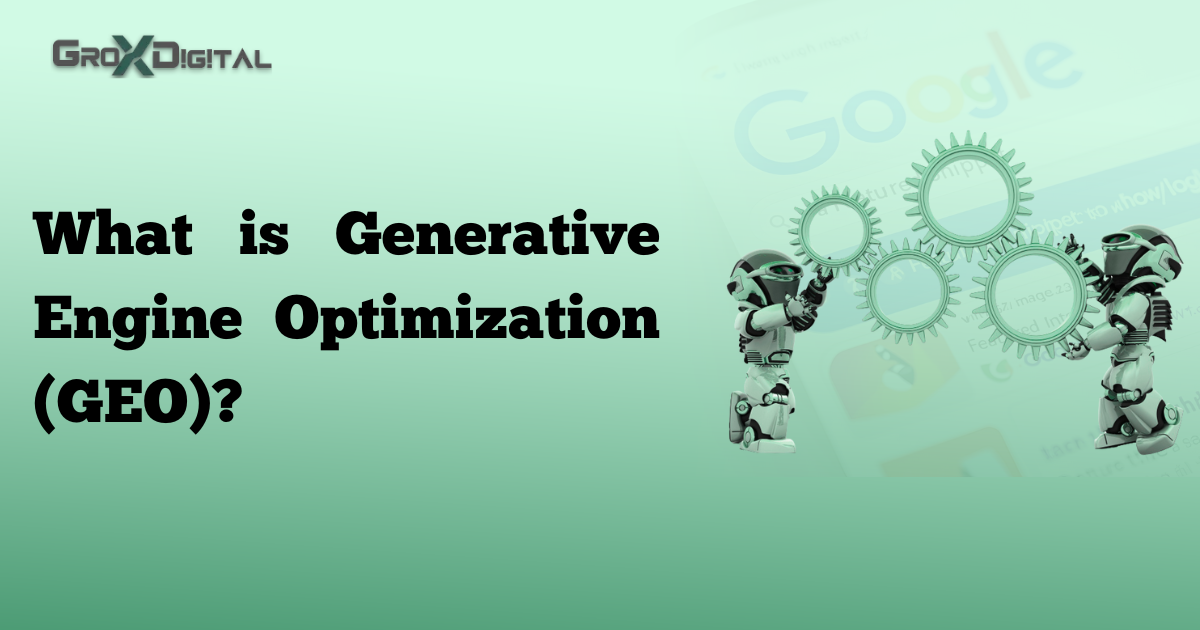Have you noticed how search is changing?
These days, you don’t always need to scroll through 10 blue links to find an answer. Tools like ChatGPT, Google Gemini, and Perplexity AI just tell you what you need to know. Quick, simple, done.
But here’s the catch: If people aren’t clicking through to websites as much, how do you make sure your business still gets noticed?
That’s where Generative Engine Optimization (GEO) comes in. It’s like SEO’s younger, AI-savvy cousin and in this post, we’re going to break down exactly what it is, how it works, and how you can get ahead of the curve.
Table of Contents
- Introduction: Why GEO Matters
- What is Generative Engine Optimization (GEO)?
- How GEO Works
- GEO vs SEO: What’s the Difference?
- Why GEO is Important in 2025
- 5 Simple GEO Strategies You Can Start Using Today
- 1. Give Clear, Direct Answers
- 2. Use Structured Data (Schema)
- 3. Write Conversationally
- 4. Show Your Authority
- 5. Be Consistent
- Tools That Can Help with GEO
- Common GEO Mistakes to Avoid
- The Future of GEO
- Final Thought
What is Generative Engine Optimization (GEO)?
Generative Engine Optimization is all about making your content “AI-friendly” so that tools like ChatGPT, Gemini, and other AI assistants find it, understand it, and (hopefully) mention it when giving answers.
With SEO, you’re aiming to rank on Google’s search results page.
With GEO, you’re aiming to get your brand or website inside the answer itself.
Think of it as moving from “I hope they click my link” to “I hope they mention my name in their answer.”
How GEO Works
Let’s compare it to traditional SEO for a second:
- SEO → Google scans your site, ranks it based on keywords, backlinks, and other factors, then shows it in a list of results.
- GEO → An AI scans your site (along with a huge chunk of the internet), understands what it’s about, and then blends your info into a conversational answer.
The AI’s job isn’t just to list links it’s to generate answers. If your content is clear, accurate, and authoritative, you’ve got a much better chance of making it into that final answer.
GEO vs SEO: What’s the Difference?
| Factor | Traditional SEO | Generative Engine Optimization (GEO) |
| Goal | Rank on search results pages | Get mentioned in AI-generated answers |
| Main Signals | Backlinks, keywords, technical SEO | Authority, context, structured data |
| Content Style | Keyword-focused | Conversational, precise, fact-checked |
| User Interaction | Click-based traffic | Answer-based visibility |
Why GEO is Important in 2025
The internet isn’t getting smaller it’s getting smarter. AI-powered search assistants are replacing some of the ways people used to Google things.
If your brand isn’t showing up in AI-generated answers, you’re missing a massive visibility opportunity.
The early adopters of GEO aren’t just getting clicks they’re building brand awareness right where people are looking for information.
5 Simple GEO Strategies You Can Start Using Today
1. Give Clear, Direct Answers
AI loves concise, factual content. If someone asks “What is GEO?”, make sure you’ve got a short, sharp definition ready.
2. Use Structured Data (Schema)
Adding schema markup to your site helps AI engines understand your content. Think of it as giving them a neat little summary card.
3. Write Conversationally
AI tools like content that feels natural. Imagine you’re explaining it to a friend, not a robot.
4. Show Your Authority
Include stats, case studies, and expert insights. The more trustworthy your content, the more likely AI will use it.
5. Be Consistent
Regularly update your content so AI knows it’s fresh and reliable.
Tools That Can Help with GEO
- ChatGPT / Perplexity AI: See how your content appears in answers.
- Frase or Clearscope: helps you write content that matches what AI engines are looking for.
- Schema Markup Generators: Add structured data to your site without coding headaches.
Common GEO Mistakes to Avoid
- Writing only for AI and forgetting real people.
- Copy-pasting information without checking facts.
- Stuffing too many keywords and making it sound unnatural.
The Future of GEO
In the next few years, GEO is going to get even more important.
We’ll see AI search assistants not just reading text, but also using videos, voice, and images. If your content is optimized for all of that, you’ll stay ahead of the game.
Final Thought
Generative Engine Optimization isn’t here to kill SEO it’s here to level it up. As AI becomes a bigger part of search, brands that adapt now will own the conversation later.
From today’s Google rankings to tomorrow’s AI-driven searches, our SEO services position you to lead the results in the age of Generative AI.
FAQs
GEO is the process of making your content more AI-friendly so it gets mentioned in AI-generated answers.
SEO aims for ranking in search results; GEO aims for being included directly in the answer.
Yes, GEO-friendly content is usually SEO-friendly too.









